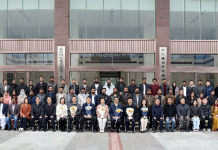DM Monitoring
XI’AN: Cao Xiulin, 46, described his former residence as “a black hole,” because he had thrown most of his money into it for maintenance.
Besieged by mountains in the city of Ankang, northwest China’s Shaanxi Province, the adobe house was often hit by flood-triggered landslides.
So when the local government initiated a plan to relocate the households in remote mountains in 2013, the former migrant worker knew his life would totally change.
“I was tired of being away from my family with high rent in cities and endless house repairs back home,” said Cao.
As part of the government efforts to eliminate absolute poverty by 2020, China plans to relocate nearly 10 million poor residents to more habitable areas between 2016 and 2020.
For those living in barren and disaster-prone areas, to move out has become the last but also the most effective choice for poverty eradication.
Located in southern Shaanxi bordering Sichuan Province, Ankang is among the most impoverished regions in China.
In the early Qing Dynasty (1644-1911), a large number of natives in south China were moved to war-torn Sichuan to fill the population gap. To protect themselves from violence, some of them headed deep into the mountains and settled there.
Before the relocation project in 2013, the flood-prone southern Shaanxi area had seen more than 2,000 geological disasters over the decade, leaving nearly 600 dead or missing and 46 billion yuan (about 6.5 billion U.S. dollars) of direct economic losses.
Working in cities used to be the only way for local laborers to support their families.
Cao, who became a migrant worker at the age of 19, has been a miner, a car repairman and an assembly worker in different cities.
“I missed my daughter very much and didn’t want her to be left at home,” he said, adding that he decided to return and reunite with his family upon learning of the relocation plan.
Mostly funded by the local government, the family of three moved to a new apartment built for poverty alleviation in town, where Cao later ran an eatery for a living.
Factories mushroomed nearby, which enabled the relocated residents to work at their doorsteps.
“The resettled residents and workers have become my regular customers,” Cao said.
According to the provincial government, Shaanxi had poured more than 110 billion yuan over the past 10 years, moving 2.2 million people out of mountainous areas.






